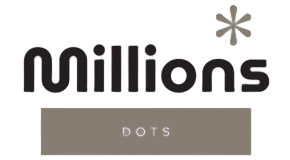As the e-commerce landscape continues to expand, Amazon FBA (Fulfillment by Amazon) has emerged as a powerhouse for entrepreneurs seeking to scale their businesses efficiently. To succeed on this platform, choosing the right products is crucial. Wholesale new hot products offer a profitable opportunity for Amazon sellers to capitalize on current trends and consumer demand. In this guide, we will explore how to source these trending products, evaluate their potential, and maximize profitability on Amazon FBA.
Why Wholesale for Amazon FBA?
Wholesale sourcing involves purchasing products in bulk directly from manufacturers or distributors at a lower cost per unit. This model provides Amazon sellers with several advantages:
- Lower Unit Costs: Bulk purchasing reduces the cost per item, increasing profit margins.
- Faster Inventory Turnover: Hot products in high demand tend to sell quickly.
- Scalability: Wholesale sourcing allows sellers to maintain steady inventory levels.
Identifying Hot Products
The key to success lies in identifying trending or evergreen products that are in high demand. Consider the following strategies:
- Market Research: Use tools like Jungle Scout, Helium 10, and Keepa to analyze sales data and market trends.
- Seasonal Trends: Capitalize on holidays, special occasions, and seasonal demand.
- Social Media and Influencer Insights: Platforms like TikTok, Instagram, and YouTube can provide early signals of trending products.
- Amazon Best Sellers List: Monitor the top-selling products in various categories on Amazon.
Popular Categories for Hot Products
- Fitness and Health: Resistance bands, yoga mats, and massage guns.
- Home and Kitchen: Air fryers, reusable storage bags, and LED lights.
- Beauty and Personal Care: Organic skincare products and hair styling tools.
- Electronics: Wireless earbuds, phone accessories, and smart home devices.
- Outdoor and Sports: Camping gear, portable grills, and hiking equipment.
Evaluating Product Profitability
Not all trending products are profitable. Use the following metrics to evaluate profitability:
- Amazon Fees: Calculate FBA fees, referral fees, and storage fees.
- Profit Margin: Aim for at least a 30% profit margin.
- Sales Velocity: Ensure the product has a steady sales history.
- Competition: Analyze competitor pricing and product reviews.
Best Practices for Sourcing
- Reliable Suppliers: Work with trusted suppliers on platforms like Alibaba, SaleHoo, and ThomasNet.
- Order Samples: Always order samples to inspect product quality before making bulk purchases.
- Negotiate Terms: Negotiate better pricing, shipping terms, and payment options.
- Diversify Suppliers: Avoid relying on a single supplier to mitigate risks.
Optimizing Your Amazon FBA Listing
To maximize sales, create optimized product listings:
- Compelling Title: Include keywords and product benefits.
- High-Quality Images: Use professional images that showcase product features.
- Bullet Points: Highlight key features and benefits.
- Competitive Pricing: Stay competitive while maintaining profit margins.
- Customer Reviews: Encourage reviews through excellent customer service.
Marketing and Promotion
Promoting your products effectively can boost visibility and sales:
- Amazon PPC (Pay-Per-Click): Use sponsored ads to increase product visibility.
- Social Media Marketing: Leverage platforms for product awareness.
- Influencer Collaborations: Partner with influencers to reach a larger audience.
- Deals and Coupons: Offer discounts to incentivize purchases.
Conclusion
Wholesale new hot products for Amazon FBA present a lucrative opportunity for sellers willing to research, evaluate, and invest wisely. By identifying trending products, sourcing from reliable suppliers, and optimizing your listings, you can build a thriving Amazon business. Stay ahead of market trends, maintain quality, and prioritize customer satisfaction to ensure long-term success.
